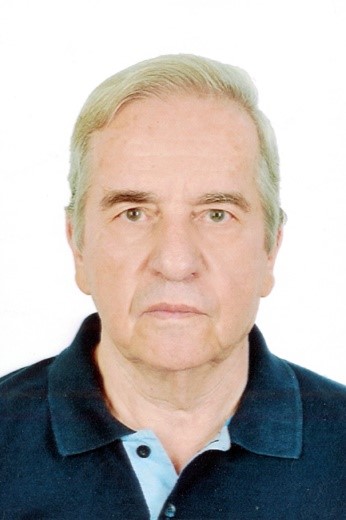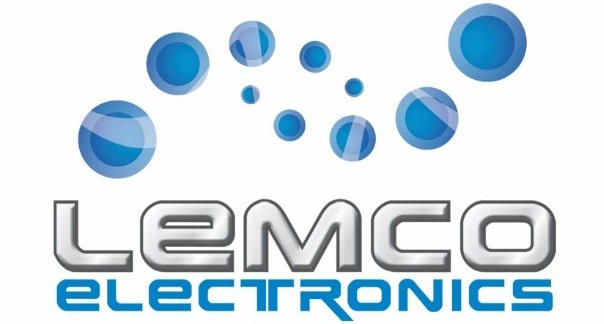1942

Birth of Ioannis Lempidakis, founder
Ioannis Lempidakis was born in Heraklion, Crete on 07-10-1942. His love for electronics started at a very young age (around 8 years old) when he first came in contact with various electronic components such as batteries, light bulbs, etc. His stubbornness and obsession with electronics led him at the age of 16 to repair radios of that period and be one of the most recognized TV/Radio electronic engineers of that time.
1961-1964
Studies and first professional steps
In the autumn of 1961, Ioannis Lempidakis went to Athens to study at the only existing TV/Radio School of Electronics that was existed during that time. During this period, he dealt professionally with electronics in various fields, such as sound installations in churches (with self-made amplifiers), sound installations in theaters (PARK Theater) etc. Towards the end of 1964 he returned to Heraklion, Crete, where he worked as electronics engineer at the American base of Heraklion, where he had his first acquaintance with television.
1965-1975
.jpg)
Audio amplifier
.jpg)
AM radio receiver
.jpg)
Oscilloscope front
.jpg)
Oscilloscope side
.jpg)
Intermediate audio freq
.jpg)
Handmade TV chassis top
.jpg)
Handmade TV chassis bottom
First professional devices
After the end of his term as an engineer and RADAR trainer in the Hellenic Air Force, Ioannis Lempidakis started manufacturing his first instruments-devices such as Medium and short-wave radio receiver, Cathode ray tube oscilloscope, Intermediate audio frequency level at 4.5MHz and an acoustic frequency amplifier which was used in 1971 for the reception of the American television station in Heraklion, Crete, in order to make the European televisions compatible with the American audio standards and in order for someone to be able to watch this specific station with image and sound.
1975

Establishment of LEBAND Electronics
In 1975, Ioannis Lempidakis resigned from the position of production manager he held in a television factory of that period, leaving behind a very high salary for the time, in order to open his own company. In the same year, the dice was cast, LEBAND Electronics became a reality with the designing, development and production of various instruments and devices related to television as well as the distribution of television signal.
1976-1978
.jpg)
Pattern generator PG101
.jpg)
Pattern generator PG102
.jpg)
TV audio converters
.jpg)
TV pattern generator PG201
.jpg)
Bench power supply PS20
.jpg)
Analog oscilloscope OS201 front
.jpg)
Analog oscilloscope OS201 side
.jpg)
Home stereo amp STEREO5050
.jpg)
Home stereo amp STEREO5050 open
The first mass-produced device
One of the first devices of LEBAND Electronics was a portable Video generator in a leather case, the PG101. They were quite successful commercially and for this reason they were evolved, thus presenting two new models, the PG102 and PG103. During the same period, LEBAND Electronics manufactured various other products such as TV audio converters, TV generators desktop instruments, laboratory power supplies, etc. with different variants and technical characteristics. A professional oscilloscope, the OS-201, was designed around the same period of time, which never went into production as its cost was quite high and the materials (screen and magnetic shielding) were hard to find. In addition to the professional products, a few retail products were also manufactured, such as the STEREO-5050 which was a stereo sound amplifier for home use. A total of 20 pieces were sold. Moreover, during the same period of time, other types of domestic appliances were designed, such as the black and white televisions with printed circuit boards, which were very successful and brought a lot of profits to LEBAND Electronics.
1979
.jpg)
SECAM decoder
.jpg)
SECAM decoder
.jpg)
SECAM transcoder
.jpg)
SECAM transcoder
.jpg)
SECAM decoder v2
.jpg)
SECAM decoder v2
.jpg)
SECAM transcoder v2
.jpg)
SECAM transcoder v2
.jpg)
SECAM to NTSC transcoder
The great rise
Color television came to Greece in 1977, with the French color television system SECAM being selected for the country. At the same time, almost all the color TV systems of that period, German, Italian, English, etc. supported the German PAL system, so there was a huge need to convert these TVs so that they can accept the SECAM system. In 1979 LEBAND Electronics built, with the meager means of the time, the first SECAM to PAL converter which was intended to replace only the PAL decoder in the existing televisions. As the installation of the PAL decoder was quite difficult and required specialized knowledge, LEBAND Electronics changed its mentality and instead of replacing the decoder, it created SECAM to PAL transcoders, which bypassed it, and its installation inside the TV was very easy. The production of these transcoders reached 100 pieces per day. These products have been hugely successful, both in the domestic market and abroad, in over 10 countries around the world.
1982
.jpg)
TV pattern generator PG301A
The great challenge
In 1982 LEBAND Electronics wanted to manufacture color TV generators instruments, which were quite demanding in their design and construction and that was a very big challenge. As the first TV color generator brought significant profits to the company, the second version PG301B was built soon after, which launched sales in Greece and abroad to the sky.
1983-1987
.jpg)
TV pattern generator PG302
.jpg)
TV pattern generator PG302PSL
.jpg)
TV pattern generator PG304
The evolution of products
During this time and with the development of digital electronics into the CMOS technology, many new models of desktop color TV generators were created that were hugely successful, with LEBAND Electronics manufacturing and producing several thousand pieces of them. Then the whole series was enriched with the family of desktop color TV generators PG303P and PG303P / S which had lower specifications compared to the PG302 series, but were also cheaper, having a huge commercial success as well. In the late 1990s, another model of color TV generator instrument (PG304P and PG304P/S) was built based on a central microcomputer, quite complex with excellent capabilities while several of them still used today. These were the last models in this product series of TV color generator instruments produced from LEBAND Electronics.
1988
.jpg)
Bench power supply PS501
.jpg)
Bench power supply PS502
.jpg)
Bench power supply PS503
A minor failure
In 1988 LEBAND Electronics tried to enter the field of desktop power supplies by manufacturing two such models, the PS201 and the PS202. Unfortunately, the first pilot batch built and marketed had a design flaw which created a very serious problem in the operation of the power supplies. Although the series was immediately redesigned to solve the problem, the damage was done, creating a strong negative reputation in the market which did not allow further sales. The same fate befell the largest power supplies on the market PS501, PS502 and PS503 that never went into production and remained only as prototypes.
1990
A new era
In 1990, the landscape of the Greek television had changed considerably, with the entry of many private TV stations that started their operation by broadcasting analog TV signal using the PAL TV system, with ERT maintaining the SECAM system for a while longer and later using the PAL system as well. As a result, all LEBAND PAL / SECAM transcoder products were obsolete in a very short time as there was no longer any need to use such devices. LEBAND Electronics had to immediately turn to new markets, with new products, in order to stay in the market and survive. This resulted in the launch of new product lines regarding the RF TV signals, such as distribution amplifiers, wideband amplifiers, RF filters and TV signal processing units like Headends for professional installation cases.
1991
.jpg)
Headend set PSP1 TVR2 TRM1 SAT1
The first analog TV headend
In 1991 LEBAND Electronics manufactured the first professional analog TV headend which consisted of Power Supply (PSP1), Terrestrial receiver (TVR2), Terrestrial TV Channel Converter (TRM1) and Dual satellite analog receiver (SAT1). This headend was state-of-the-art for its time as it used CPU-controlled PLL technology, competing strongly with any similar product of the worldwide market. This series was a great success, launching sales and establishing the name LEBAND in the field of professional installations.
1992
.jpg)
Headend units
.jpg)
Headend units
.jpg)
Headend units
The evolution of professional units
After the huge success of the first professional headend of LEBAND Electronics, there was a need for immediate development and upgrade of its capabilities. For this reason, in 1992, LEBAND Electronics redesigned and evolved the existing headend line with new models, in different sizes and metal chassis.
1993
.jpg)
1W TV analog transmitter
A new market for TV transmitters / transponders opens
In 1993 LEBAND Electronics, using the units from the first professional headend, built the first 1W (PEAK SYNC) analog TV transmitter, which consisted of a modulator in the IF TV band with professional (vestigial) features(IFM1), an up converter from IF to UHF (UCU1), a power supply (PSP1), and a UHF transmitter (PA1W-75). This transmitter was a great success as, at that time, while many new private stations as well as many municipalities had to cover their areas, opening a new large chapter for LEBAND Electronics in the field of the analogue TV broadcasting.
1994
.jpg)
Analog TV Field strength meter FSM202
.jpg)
Analog TV Field strength meter FSM203
.jpg)
Analog TV Field strength meter FSM204
The first field strength meter
In 1994 LEBAND Electronics started to enter the field of analog TV field strength meters, building the first model FSM 202 which only supported terrestrial analog TV reception. The following year, new models followed using a processor, such as the FSM 203 and FSM 204, which were terrestrial and satellite field meters with spectrum functions. These products were very successful both locally and abroad, and even winning several awards in European competitions.
1995
.jpg)
Analog TV mono modulator MOD1
.jpg)
Analog TV mono modulator MOD2
.jpg)
Analog TV mono modulator MOD3
.jpg)
Analog TV mono modulator MOD4
.jpg)
Analog TV mono modulator MOD5
Starting to write History
LEBAND Electronics was particularly successful and became famous for the analog RF PAL modulators it started manufacturing in 1995. The first model to be built was the MOD1 which operated on the CH02-CH04 frequencies in VHF. The first version of the product did not have a PLL to lock the output frequency. About a year later, in 1995, LEBAND Electronics redesigned the MOD1 to feature PLL and at the same time designed a complete line of PLL modulators that covered all available frequencies.
1996
.jpg)
1W UHF Analog TV transposer TRU1
New analog TV transposer
In 1996 LEBAND Electronics had already dominated the Greek market, with the first analog TV transposer and a new 1W rack mount transposer.
1997-1998
.jpg)
Analog TV stereo modulator MOD1ST
.jpg)
Analog TV stereo modulator MOD2ST
.jpg)
Analog TV stereo modulator MOD3ST
.jpg)
Analog TV stereo modulator MOD4ST
.jpg)
Analog TV stereo modulator MOD5ST
New stereo television modulators
With the analog monophonic modulators being a great market success, LEBAND Electronics expanded its product range with five stereo modulators.
2000
.jpg)
3W UHF Analog TV transposer TRU3
.jpg)
6W UHF Analog TV transposer TXU6
.jpg)
6W UHF Quad Analog TV transposer TR4A
New analog TV transmitters
With the great demand in analog transmitters and transposers, LEBAND Electronics proceeded to manufacture new models with higher power up to 3W and 6W, available until 2010, selling hundreds of units in private stations, municipalities, etc. It is worth noting that LEBAND Electronics managed to become one of the main suppliers of low power transposers of ERT, the national TV & radio station and the primary TV channel provider in Greece, winning major tenders and excluding large foreign companies of the time thanks to the unparalleled construction quality and support that it provided.
2001-2005
.jpg)
1W UHF power amplifier PA1W
.jpg)
3W UHF power amplifier PA3W
.jpg)
6W UHF power amplifier PA6W
.jpg)
Analog TV demodulator TVR1N
.jpg)
RF filter mixer
.jpg)
UHF output filter
.jpg)
Analog TV vestigial headend VMOD2 VCONV2
.jpg)
Distribution amplifier DA03
.jpg)
TV antenna amplifier CA03
.jpg)
Distribution amplifier DA01n
The pinnacle of success
Between 2001 and 2005 LEBAND Electronics enjoyed the success of its products developed in previous years but at the same time did not stop developing new products, offering new solutions to the market at affordable prices. At the same time, other products were manufactured such as 1W UHF power amplifier, analog TV receiver/demodulator, RF filter-mixers, analog TV broadcast output filters, professional Vestigial headend for analog TV modulators, wideband & narrowband amplifiers.
2006

The end of a legend, the beginning of a new era
In 2006, with the owner and founder of LEBAND Electronics, Ioannis Lempidakis, having reached retirement age, the company closes to reopen under a new name. In January 2006, LEBAND Electronics reopened under the name of Lemco Electronics with the son, Konstantinos Lempidakis, taking over the company's helm alongside with his brother-in-law Antonis Partsinevelos. The new era begun, with Lemco Electronics continuing the successful and sky rocketing course of LEBAND Electronics, with Ioannis Lempidakis holding a consulting role in the new company.
2007
.jpg)
Headend Compact 10
.jpg)
Electronica & Digitech Athens
The continuation in an analog and a digital era
Lemco continued the successful course of LEBAND Electronics by creating new analog TV products, such as the Compact 10 headend, ideal for small business installations. At the same time, 2007 is a milestone year for Lemco, as digital television has already made its appearance in Europe and the rest of the world, and Lemco is launching its first research and development efforts to create its own digital TV products. Meanwhile, Lemco keeps participating in various exhibitions.
2008-2010
.jpg)
Quad analog TV modulator MOD6
.jpg)
Analog TV modulator MOD7
New analogue TV products appear
During this period, new analog TV products are emerging to better complement the Lemco Electronics’ product line.
2011
.jpg)
2W DVBT transmitter DTM2U
.jpg)
5W DVBT transmitter DTM5U
.jpg)
6W DVBT power amplifier DPA6W
The first digital TV products
After about 4 years of intensive research and development, Lemco Electronics begins to produce the first digital TV products. These products are digital DVB-T transmitters and low power transposers (up to 6W RMS) with MPEG2 image compression technology. Although, due to the change in the installation process of transmitters / transposers in the country, the transition from MPEG2 to H.264 as well as the high cost of their production, this series was not very successful, with just a few pieces being sold in the local market. At the same time, individual digital TV broadcast amplifiers were built.
2013
.jpg)
ANGACOM Cologne
.jpg)
Digital TV modulator DMOD4S
The first attempts for exports
With the economic crisis plunging Greece into recession, Lemco considers the export of its products abroad to be the only way of success following the example of LEBAND Electronics. For this reason, the company participated for the first time at ANGACOM in Cologne, in 2013.
2014
.jpg)
ANGACOM Cologne
.jpg)
Quad input Digital TV modulator DMOD4
The effort continues
Lemco's participation in ANGACOM 2013 did not lead to the expected sales, but the unavoidable cocnlusion was the need to redesign almost all of its products as, in several cases, the prices offered were almost double of those of competing products in Europe. In 2014, Lemco participated for the second time in ANGACOM 2014, with new products, more competitive but also with an upgraded stand.
2015

.jpg)
DVBlocks MPEG2 encoder
.jpg)
DVBlocks TS multiplexer
.jpg)
DVBlocks DVBS-S2 satellite receiver
.jpg)
DVBlocks LDMOS 10W power amp
OEM, a new market opens
Lemco, while creating new products, started offering OEM services to third parties. For the first time, the inner parts of Lemco products and even the products themselves, were offered to large companies abroad, under their own brand. Meanwhile, the company had created a complete series called DVBLOCKS, which were different parts of a Headend that depending on how you combined them, created corresponding solutions. This series was addressed only to manufacturers.
2016-2020
.jpg)
ANGACOM Cologne
.jpg)
CABSAT Dubai
.jpg)
CommunicAsia Singapore
The rise peaks
The years that followed resulted in Lemco’s constant growing and evolving, creating new products that were highly competitive in both performance and price. At the same time, Lemco participates in many exhibitions in the field, both locally and abroad. ANGACOM 2015 in Cologne-Germany, CABSAT 2019 in Dubai-UAE and CommunicAsia 2019 in Singapore.
2021




Success continues
Lemco currently holds a leading role in the field of digital television, exporting its products to more than 30 countries and four continents (Europe, Asia, Africa, Oceania), while the developments and requirements of the time led it to create individual branches, with a total rebranding taking place. Lemco, having over 40 years of experience and manufacturing of electronic devices, now manufactures products for other sectors, such as terminals, POS, price / ticket checkers etc. At the same time, Lemco participates as an Integrator in major projects, such as the new stadium of AEK football team in Athens, Greece. The passion for video games held by the owners of Lemco, led to the creation of a new internal department for the development and production of video games on PC, PlayStation, XBOX and mobile devices.
"Having targets is not enough, if you don’t know how to aim."
Albert Einstein
"Having targets is not enough, if you don’t know how to aim."
Albert Einstein

